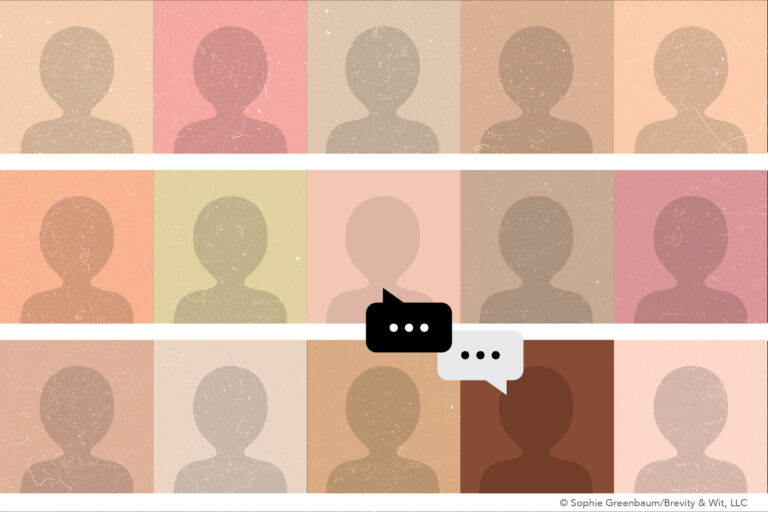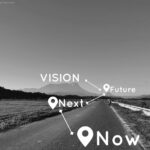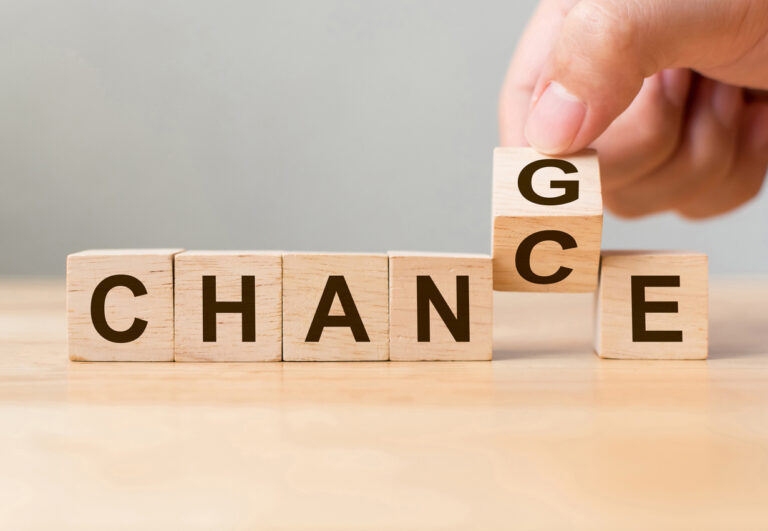I bet you read the byline of this article and quickly, implicitly thought, “this person is not white.”
It’s okay if you did. You’re right. And that is not a racist thought.
Now, if your second implicit thought was, “Well, I don’t have to pay attention to anything they say,” well, then, maybe we have some unpacking to do.
In my first blog post for Greater Public, I wrote about unconscious or implicit bias – what it is, how it affects our decision-making, and therefore, how it affects the marketing and fundraising at public media stations.
Today, at the risk of being trolled by people I don’t know on the Internet, I want to talk about Whiteness and why it’s crucial we begin, as a country and a planet, to be able to talk about Whiteness whenever we want to talk about race.
It is curious to me that we try to address racial disparities and diversity while trying to avoid talking about this construct humankind invented called Whiteness. It’s like trying to talk about climate change without talking about greenhouse gases. (Which I suppose some people are trying to do, but I don’t think it’s going very well in terms of leading to sustainable solutions.)
Perhaps, because race is a social construct, we think we can justifiably avoid this conversation. For a period in the 1990s, social science took great strides to show that there is no biological determinant of race. This was during the same period when Tiger Woods rose to fame, a dark-skinned man with African American and Asian heritage, whose father proclaimed on The Oprah Winfrey Show that Tiger’s race was “the human race.” Proclamations like this led us to believe that perhaps we had accomplished Martin Luther King’s dream and we, as a society, were finally able to judge people by the content of their character, not by the color of their skin.
The problem with this approach is that 1) that’s not how the brain works and 2) it invalidates the different experiences people have because of their race. Yes, race may be a construct we invented. So is time. And nationality. These constructs may not be based on anything objective according to the physical sciences, but to deny them ignores the fact that human constructs govern most of our lived experience. Try having a conversation about your day without talking about time. Or about traveling internationally without talking about nationality.
So, we must talk about race, and we must talk about Whiteness if we truly want to be able to create more equity and inclusion in our work and our world.
One of the reasons it is so difficult to talk about Whiteness is that we have a poor vocabulary for it. Colloquially, we think of White people as those of European descent, although the U.S. Census Bureau defines white people as those “having origins in any of the original peoples of Europe, the Middle East or North Africa” (a controversial definition). White is sometimes used interchangeably with Caucasian, although Caucasian was considered more of a delineation of skeletal features than skin color, and some people from the Indian subcontinent are considered both Caucasian and Aryan. (On a side note and for the record, the swastika is an ancient Hindu sign of prosperity that the Nazis appropriated. It is still used today in India particularly in depictions of Lakshmi, the goddess of wealth, and should not, in those contexts, be interpreted as anti-Semitic.)
Princeton profession Nell Irvin Painter wrote in an Op-Ed in The New York Times that “Whiteness is on a toggle switch between ‘bland nothingness’ and ‘racist hatred.’” More recently, futurists have predicted that, as more people are born with mixed ancestry, racial discrimination will be based on perceived race, not actual race, as one White man found when he was perceived to be Hispanic and routinely harassed by his co-workers. That means that whether you are perceived to be White will garner you more societal power than whether you actually are of European descent.
In my mind, Whiteness comes down to a collection of physical characteristics – such as skin color, eye color, hair color and texture – that have been deemed either the default or the most desirable by our society. To identify as White is to be indoctrinated into the belief that you are the norm, that your experience is central, and anything else is “other.” Whiteness allows White people to feel a sense of ownership over this country, while anyone non-White is made to feel like a visitor or, in the case of Native Americans, displaced. Ta-Nehisi Coates says that this sense of ownership is why White people struggle when they are told they cannot say the N-word in rap songs: To be White is to believe that all rights are afforded to you, even while you deny rights to others. To be White is to believe everything can be owned by you.
The other reason it’s difficult to talk about Whiteness is because it requires talking about White privilege. As Peggy Macintosh begins her seminal essay on the topic, Unpacking the Invisible Backpack, many White people were “taught to see racism only in individual acts of meanness, not in invisible systems conferring dominance on my group.” To admit to systemic advantage goes against the core myth of American society – that we are a meritocracy where, if someone works hard, they have a shot.
As an Indian American, I get why this is so disturbing to our psyches. Asian Americans, and particularly immigrant families, are very attached to this idea of meritocracy. My parents came here with $20 in their pockets, one suitcase, and pregnant with me. They were able to build a thriving medical practice and send me and my brother to private school, allowing us to graduate with college degrees and no debt while sacrificing their desire for vacations and fancy things. I saw how hard they worked every day to provide for not just us, but for their families of origin as well. It is very tempting to believe that they studied hard, worked hard, and that was the solitary cause of their material success.
But that is not the full picture. The fact is that along with that $20 and one suitcase, both my parents came here with medical degrees. Neither of them came from rich families, so how was it that they could afford medical school? It is because India has a socialized education system that, unlike ours, is not funded by property taxes (a system that just keeps the rich richer and the poor poorer) and that made it possible for them to attend medical school for about $50 a semester. And the U.S. immigration system takes advantage of socialized education to import professionals who can do the job Americans don’t want to do. In the 1970s, the decade my parents arrived, there was a doctor shortage in the United States, and my parents were prime candidates for a visa and eventual green card and citizenship. (Their arrival also followed the 1965 Immigration Act, which repealed the earlier Immigration Act of 1924 that installed the National Origins Formula, whose purpose was “to preserve the ideal of American [Northwestern European] homogeneity”. In other words, before 1965, they likely would have been denied a visa regardless of their education because of their skin color.)
The question this fuller portrait of their success leaves me with is this: If America provided affordable education to all of its citizens, so that individuals from humble beginnings like my parents could also get a quality education throughout their life without incurring debt, would we not see just as many African American and Latinx doctors?
And though my parents worked hard, does that mean that other people with less money – janitors, teachers, day workers, nurses – are not working just as hard? We shrink from words like privilege (and White privilege especially) because we associate being privileged with being spoiled, and being spoiled with being lazy. But privilege is not about hard work; it’s about access to opportunity. And sadly, in this country, opportunity is dependent on race and color.
The solitary truth we must all come to accept is that the original framers of our Constitution intentionally designed a system that would benefit some (e.g., white men with property) over all others. That design is still in effect today. At the same time, the framers of our society also imbued it with universal values of equity, justice, and happiness. And that has been our saving grace as a nation; by evoking our values, we have been able to iterate upon the design. While you, as an individual, are not responsible for the design, you, as a citizen, are responsible for seeing the system, acknowledging your advantages, and beginning to take steps to design a more just and equitable system wherever you can. It could be in your home, in your child’s school, in your neighborhood, or in your workplace.
When it comes to nonprofit media, there is an even bigger responsibility you have for seeing the system and taking steps to redesign it. As Mahzarain Banaji says, “bias is the thumbprint of culture on the brain.” And culture is our collective programming. Media plays a huge role in contributing to that collective programming. Our schemas for what an American family looks like, for what a credible source sounds like, for who is seen as a donor or philanthropist and who is not, is all coded by media.
So what can you do, as an individual, to become comfortable talking about race and privilege and particularly, your privilege? How do you develop the emotional skillfulness to deal with these topics?
First, self-awareness goes a long way. When it comes to equity and inclusion, there is no end goal, just the journey. We are all at different starting points moving at different paces, but if you can accurately benchmark where you are and your progress, you stand a better chance of speaking about these topics in a way that allows you to connect with others and foster your own personal growth.
If awareness is not your strong suit, I suggest reading. And there’s a lot out there. Here is a list of some of the books that helped me on my journey. Some of them deal with identity and race head-on and some do not.
- White Fragility by Robin DiAngelo
- Everyday Bias by Howard Ross
- The Ethical Sellout by Lily Zheng
- The Spiral Staircase by Karen Armstrong
- Switch: How to Change Things When Change is Hard by Chip and Dan Heath
- Dare to Lead by Brené Brown
- All About Love by bell hooks
- Conversations: Straight Talk from America’s Sister President by Johnnetta Betsch Cole
- The Karma of Brown Folk by Vijay Prasad
- Insight: The Surprising Truth About How Others See Us, How We See Ourselves, and Why the Answers Matter More Than We Think by Tasha Eurich
- How to Be Anti-Racist by Ibram X. Kendi
- Upstream: The Quest to Solve Problems Before They Happen by Dan Heath
- Gender Talk: The Struggle for Women’s Equality in African American Communities by Beverly Guy-Sheftall and Johnnetta Betsch Cole
- Power Politics by Arundhati Roy
Allow these books to open doors in your mind and reflect on how the ideas in the books relate to your own life. And feel free to add to the list by posting your favorite titles in the comments below.
If you are someone who needs to learn in a more extroverted manner, consider attending a workshop addressing white privilege. Organizations like Training for Change, the Peace & Justice Center, and Witnessing Whiteness routinely hold such workshops.
Most importantly, if you really want to be able to manage your Whiteness while building a more inclusive and equitable world, don’t invalidate people when they tell you about their experience. When someone from a marginalized group, particularly a person of color, tells you about their experience of racism, BELIEVE THEM. You may be tempted to see their experience as a one-off, something attributed to their character rather than their race. DO NOT SAY THIS. The experience of having someone White tell a person of color something is not racist is like having a loved one die and having a friend say they deserved it. It could possibly, in a few instances, be true, but really, what are you doing? Instead, challenge your assumption within yourself and believe your friends. VALIDATE their experience, even if you don’t see it the same way. They know what it’s like to live with their skin color way better than you ever can. More importantly, by sharing their experience with you, your friend/coworker is trying to have a more authentic relationship with you. By dismissing or gaslighting their concerns, they are learning that they can never be their true self in front of you.
By developing the ability to validate the experiences of people of color, it will open up a whole world to you – the world most people of color keep hidden from White people. This sort of empathy and understanding will allow you to design marketing and fundraising campaigns that speak to the concerns, passions, and joys of people of color – and maybe influence the editorial side to do the same. After all, the demographics of the U.S. is changing. People of color may be a subset of your current audience, but they will be the majority of your future audience.
As Jonathan Metzl eloquently outlines in his book Dying of Whiteness, your constructed Whiteness is not helping you. It is a racial identity that gets you to act and vote against your best interest. A more equitable world would allow everyone to flourish, including White people. But we can only get there when we are brave enough to talk about it.
In the words of Margaret McFarland, longtime collaborator of Fred Rogers, “Anything mentionable is manageable.”
This essay is part of Greater Public’s thought leadership series focusing on whiteness in public media. This series embraces bold, honest thinking that points the way toward public media’s brightest future.








